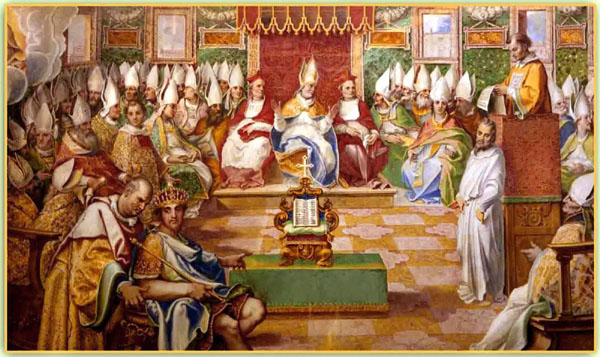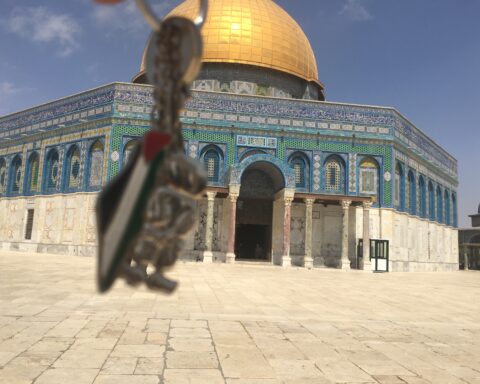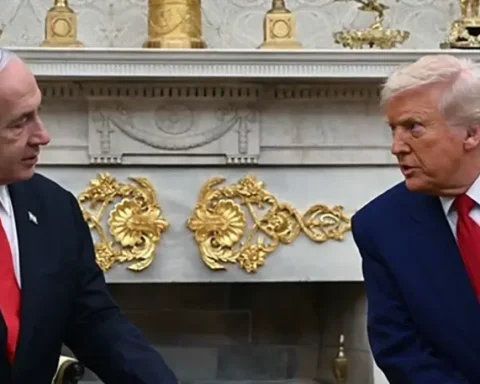This summer marks 1,700 years since Emperor Constantine called the church to come and reason together regarding the Christological crisis originating with a little-known presbyter in Alexandria, Arius. While Constantine’s genuine interest in the development of Christian doctrine has been debated, his desire for peace and unity across his empire was undeniable. While the council’s theological purpose was to articulate and defend orthodoxy, socially and politically it enabled a transition where Christians, under the umbrella of Nicene Christianity, could finally become fully integrated with Roman society and particularly the military. While some church fathers reference Christians in the military prior to Nicaea, as Eusebius of Caesarea alludes to in The History of the Church, Christian military service was controversial in the early church, with many of the ante-Nicene fathers in direct opposition.
For example, Justin Martyr in The First Apology and Irenaeus of Lyon in Against Heresies, highlight the transformation of instruments of war in Isaiah 2 as a sign of the eschatological peace of God’s kingdom, turning “their swords into plowshares” and “their spears into pruning hooks” to argue that military service was not acceptable for Christians. Others, like Origen of Alexandria, argued that Christians ought to support the empire spiritually, though not martially. In Against Celsus, Origen wrote that “…none fight better for the king than we do. We do not indeed fight under him, although he require it; but we fight on his behalf, forming a special army—an army of piety—by offering our prayers to God.”
While the Council of Nicaea did not specifically address the matter of military service, it nonetheless marks a critical transition point. After Nicaea, Christians were no longer simply tolerated within the empire but were instead increasingly integrated into its religious, civic, and military institutions. The long-standing ambivalence about military service that marked the ante-Nicene period began to fade. As Christians took up positions of public authority, military participation followed, not as a matter of conciliar doctrine, but as a consequence of political reality. The pacifist instincts of the early church were no longer dominant; they were replaced by a theology of responsibility for the common good, culminating in Augustine’s just war reflections.
Here in AD 325, the boundary between the church and its Roman context began to dissolve. Emperor after emperor, minus Julian the Apostate, would join the church, though several did embrace Arianism. The early church was drawn to pacifism, particularly as inspired by the Sermon on the Mount, and also opposed mandatory army practices like sacrificing animals, incense, and libations to the emperor. But after Constantine and Nicaea, the concerns of the ante-Nicene fathers regarding warfighting and sacrifices were resolved. Christ’s admonitions towards nonviolence still mattered but were to be considered alongside the actions of Israel in the Old Testament as well as Paul’s words in Romans 13. This shift meant that the church would soon begin embracing the idea of Christian armies for the defense of Rome.
What started as a few hundred believers scattered throughout Rome’s disparate territories would soon transform the social and political foundations of the Roman Empire, and eventually the world. Christians would swing from a minority to the majority and eventually become the very official religion of the state by order of Emperor Theodosius I in the 4th century. As the Christian faith spread, the church saw fewer voices against Christians participating in military service.
Through Constantine’s actions with the first ecumenical council of the church, Eusebius saw a new dawn approaching where Christians would not only serve but also lead the Roman Empire. Just as the fate of Israel as a people was indelibly tied up with Israel as a political entity in the Old Testament, the church post-Nicaea increasingly came to see its mission and survival as intertwined with the structures of Roman governance. Paul’s instructions to the church in Rome was that the government was a “servant of God.” New possibilities for civil engagement emerged as Christians saw the empire changing. There were still those who dissented against military service, but they would remain a minority.
Augustine of Hippo, described by many as the first Christian writer in the just war tradition, is representative of the church’s shift from remaining aloof from Roman society to leading Rome. In his magnum opus, The City of God, Augustine argued that if peace was to be kept for the church within the empire, then self-defense is non-negotiable. As proclaimed by the Preacher, there is “a time for war and a time for peace” (Ecclesiastes 3:8). Augustine and the post-Nicene church fathers began to develop a Christian doctrine of warfighting, learning from the Hebrew Bible as well as from pagan philosophers like Plato, Aristotle, and Cicero, all interpreted through the lens of Christ’s atoning sacrifice. Nearly a thousand years later, Thomas Aquinas would expand upon and codify just war theory as it is known today, laying out the necessary justification to go to war, ius ad bellum (just cause, right intent, rightful authority) alongside the law in conducting war, ius in bello (discrimination, proportionality, military necessity).
Constantine’s desire for Christianity to be both politically and theologically united as well as fully integrated with the Roman Empire remains among the most controversial developments in the history of the church. Long after the demise of the Roman Empire, the church has continued on, though the legacies of Rome remain. Despite the inspiration many draw from the early church’s faithfulness amid persecution, the truth is that Constantine’s actions were certainly guided by Providence. For Christianity to be allowed not just out of the catacombs, but to ascend to the heights of Roman society was an immense blessing for both the church and the world at large.
* Jackson Greer teaches history at a Classical Christian School in western Kentucky. He holds a MA in Theological Studies from Southern Baptist Theological Seminary and is a MA candidate in American History at Gettysburg College.
Source: https://providencemag.com/2025/07/post-nicene-council-and-the-militant-church/






